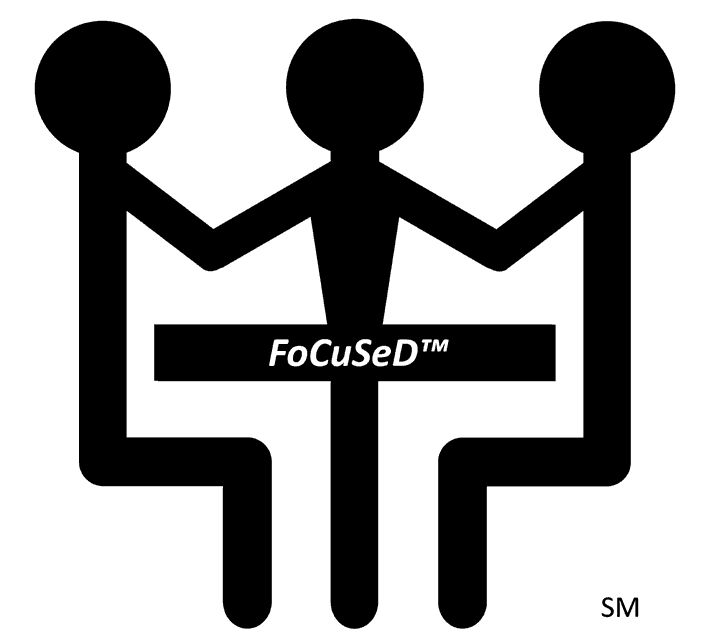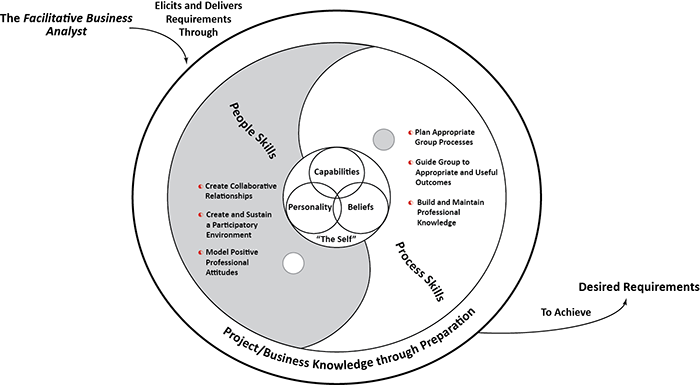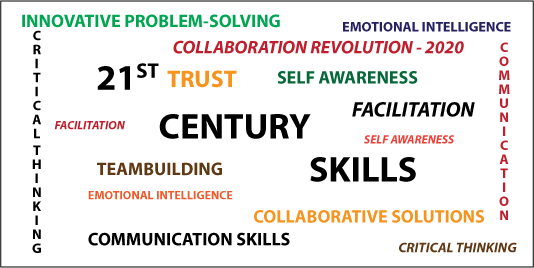June 2006 - The FoCuSeD™ Facilitator eNewsletter

How do we Organize Facilitators? | Gary Rush Facilitation
Given that using a facilitator increases productivity of a project by more than 25% and it has been shown that using a facilitator improves team function, you would think that training facilitators and deploying facilitators in a company would be an easy sell. Facilitation should be a standard skill set required in every company.
Prior to developing the FAST technique, I managed a team of facilitators and for the past 21 years,I have been training facilitators. I have trained from 1 to almost 175 facilitators in a single company. During that time, I have heard the same concern, “How do we organize facilitators?” In one company where I trained over 100 facilitators, maybe a dozen actually facilitated. The others used what they learned in doing their job more effectively. They felt it was valuable, but wondered, “Was the training worth the time and money?” The answer is, “yes.” Facilitator training is beneficial in many ways, but companies benefit more when they define how they will deploy facilitators and target their training.
That way, facilitators get used more effectively, facilitated workshops become a norm in the company, and training money is well spent. There are no absolute answers – each organization is different. However, there are some basic guidelines that will enable you to effectively structure your facilitator resources and get the most out of the training.
Organizational Structures
I know of three structures that have worked in different companies. Each of these has its merits depending on your needs. The three structures are:
- Centralized group of facilitators
- Localized facilitators
- Part Time facilitators
A centralized group of facilitators is the structure that I have recommended the most. This is similar to a project office – a pool of skilled facilitators who are used throughout the organization for any type of workshop. These facilitators tend to be strong facilitators because they get to practice their skills and become comfortable with a variety of workshops. Managing their schedule is easier because they are centralized. Organizations with a centralized group often move trained people into the position for a few years to give them experience. Facilitating provides outstanding leadership experience. These facilitators then move on to become effective managers and leaders. The centralized group resides in either the IT department – because a lot of facilitators come from here – or the HR department – because of the synergy with people development skills. Most groups range in size from four to a dozen facilitators. Many have additional responsibilities such as project management, methodology, or training. The additional responsibility helps to tie them into the organization because of the additional contact for project management or internal consulting. It also helps balance the schedule when they are not facilitating. The only downside is that they can become highly effective facilitators and have little time for the other responsibilities because of demand for their services.
Establishing localized facilitators is a variation on a centralized group where different departments have their own facilitators rather than just one central group. For example, HR may have facilitators for team-building workshops while IT may have facilitators for requirements and design. The structure and other characteristics are the same as a centralized group except that the facilitators focus on certain types of workshops and, therefore, certain types of processes. The facilitators may receive different types of training as well. This is done when an organization wants to have specialized facilitators.
Using part-time facilitators is the structure most often implemented. Companies do this because they are not sure if the use of facilitators will increase and don’t want to dedicate resources to something about which they are unsure. In this structure, facilitators are trained but continue to do their current job. They agree to devote a portion of their time to facilitating. This works when there are sufficient facilitators. Generally a few of the facilitators do most of the facilitating creating a pseudo centralized group – this is what happened with the company I mentioned in the beginning where maybe a dozen used their skills.
The Pros and Cons
While all three structures work, there are some pros and cons for each. Both the centralized structure and the localized structure require dedicated resources, consistent methods, internal marketing, and a defined way to tie the facilitation into the work at hand. IT departments without a defined project management process have a difficult time with a centralized group because facilitators are not part of the process. It is up to the discretion and experience of the project manager. Central groups work well in developing experienced facilitators who develop effective leadership abilities. Central groups need a manager who clearly defines career paths for people coming into and moving out of the group. With a centralized or localized group, the organization gains highly effective facilitators; the use of facilitated workshops increases, and the organization gets a path for leader development.
The part time structure works in the beginning but breaks down when scheduling issues arise – who manages the schedule? If a manager is not able to find an available facilitator, the next time he or she will not bother looking and revert to a non-facilitated workshop. The few facilitators, who are used, work well until they move on and then the practice dissipates. The organization can help avoid this by assigning a virtual manager or “champion” – someone responsible for managing the facilitation practice. When the initial facilitators are successful, this structure can help gain acceptance of facilitation without a large investment. Part-time facilitators are not an effective long-term structure – it’s effective for start-up but central groups are more effective for long-term.
Determining the best structure
The following describes what to consider when deciding which structure is best for your organization. The first thing you need to do is to define your goal – do you want facilitation to become a standard practice in the company? Or is it something you want to use to help with projects? Knowing the desired end result makes selecting a structure more effective.
Company Processes:
If your company has well defined processes (e.g., planning processes, requirements development processes, or project management processes) centralize or localized groups work well. Without well-defined processes, the facilitators must take on the additional role of process consultants. Companies without well-defined processes struggle with using facilitators because they are not “part of the process.” Part-time facilitators work better because it is a smaller investment and they can demonstrate small successes and grow its use.
Newness:
If your company has never used facilitators in the past, implementing a centralized group or localized groups is asking for a large commitment for an unknown. Part-time facilitators are less risky and can eventually turn into a central group. If your company has had success with facilitation in the past, a centralized group or localized groups can help ensure that the success continues.
How are they used?:
If your company plans on using facilitators only for a few types of workshops, such as requirements, a localized group is best. Organize the group in the department who uses them. Part-time facilitators also work well when only a few types of workshops are being conducted. If your company plans to use facilitators for many types of workshops, such as planning, requirements, team building, etc., then a centralized group provides the advantage of support and synergy between the facilitators. It also helps with scheduling.
Volume:
If your company is conducting many workshops (e.g., more than 4 a month or more than 3 a week) you need a centralized group to manage the schedule. If your company is conducting fewer than 3 workshops a month, then part-time facilitators work fine because there is little or no scheduling problem.
Recommendations
If you want facilitation to become a common practice in your company, a centralized group is the way to go. If you are not sure, begin slowly with part-time or localized groups. Look at your volume and train the facilitators to support that volume. Instead of training many people in facilitation when you are only going to use a few of them, train a core group in facilitation and train the others in specific courses to enhance their skills, such as leadership and meeting management. That way, the training is more effective and targeted. Make sure that one person is responsible for assessing the effectiveness of facilitation and the facilitator structure in your organization – either the group manager of central or local groups or a virtual manager for part-time facilitators. When facilitation gains acceptance, change the structure to support the current use. Above all, to implement facilitation in your organization:
- Define the objective for using facilitation.
- Define how the organization intends to use facilitators – types of workshops and which departments.
- Decide how you will deploy facilitators before you train them.
- Define the training objectives.
- Join organizations such as the International Association of Facilitators (IAF) to keep abreast of what is working and what is not.
When you know what you are trying to do, training will enable you to achieve your goal and the training will be more effective. Implementing an idea or concept with a plan has a greater chance of success. 

![]()





